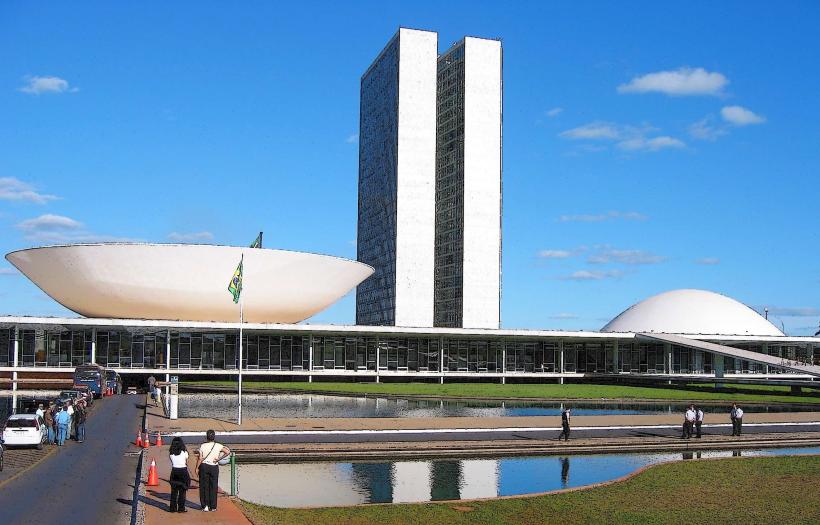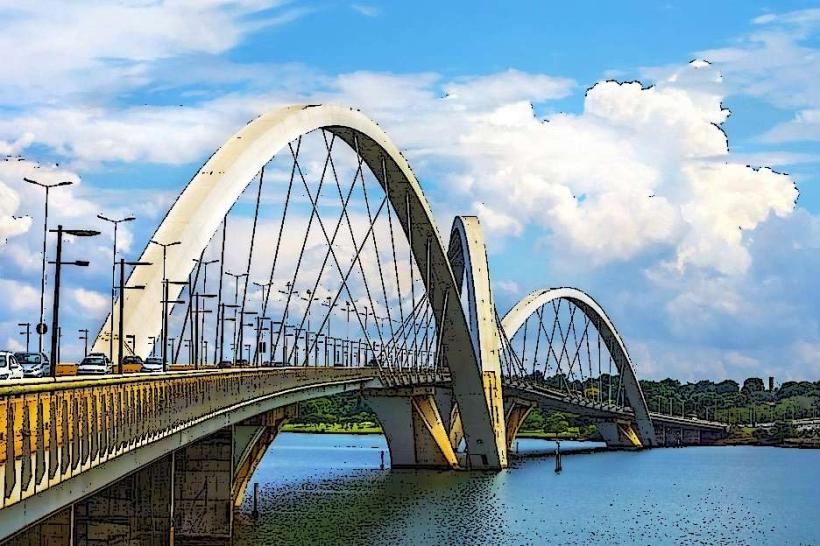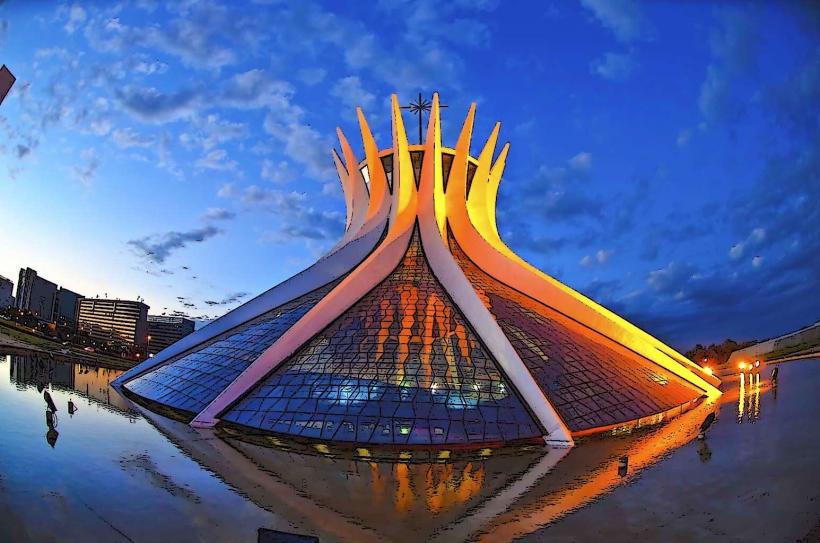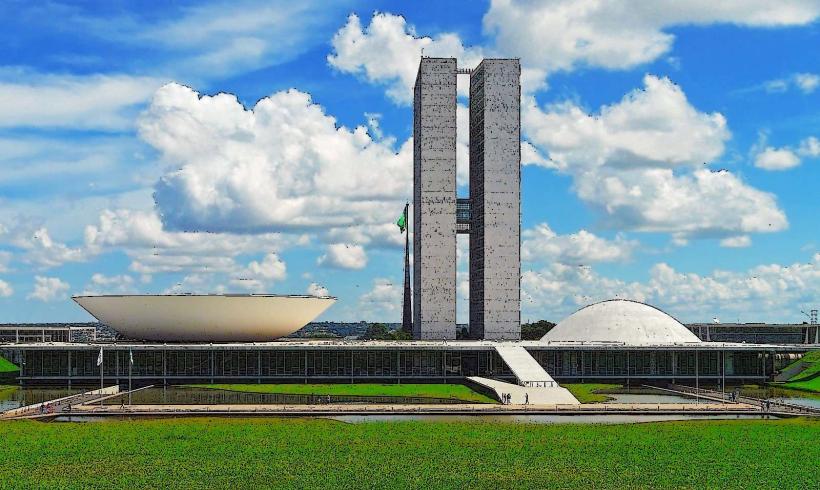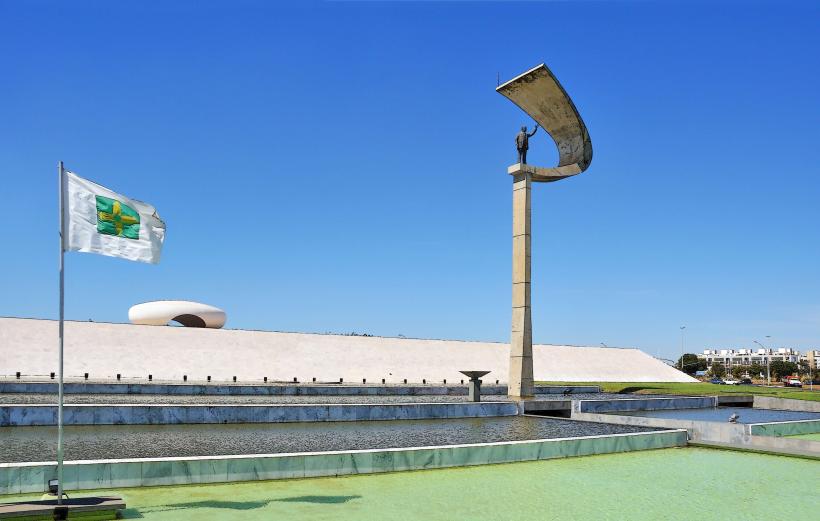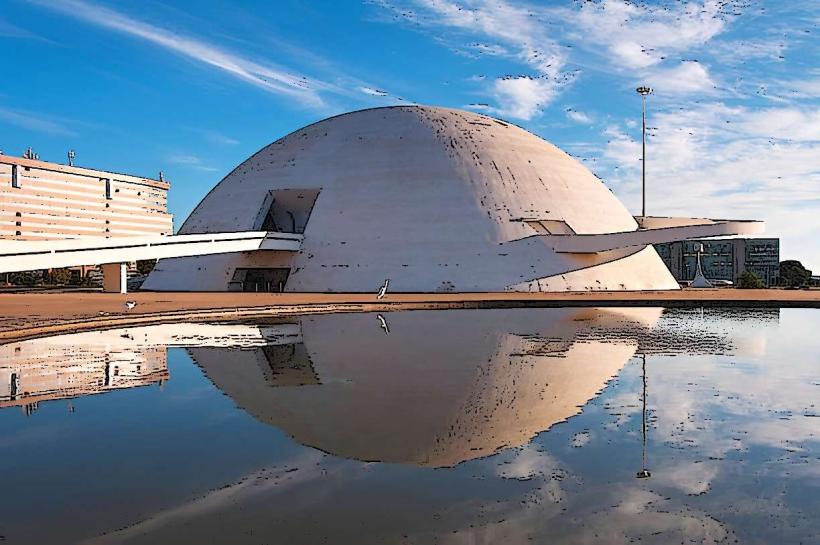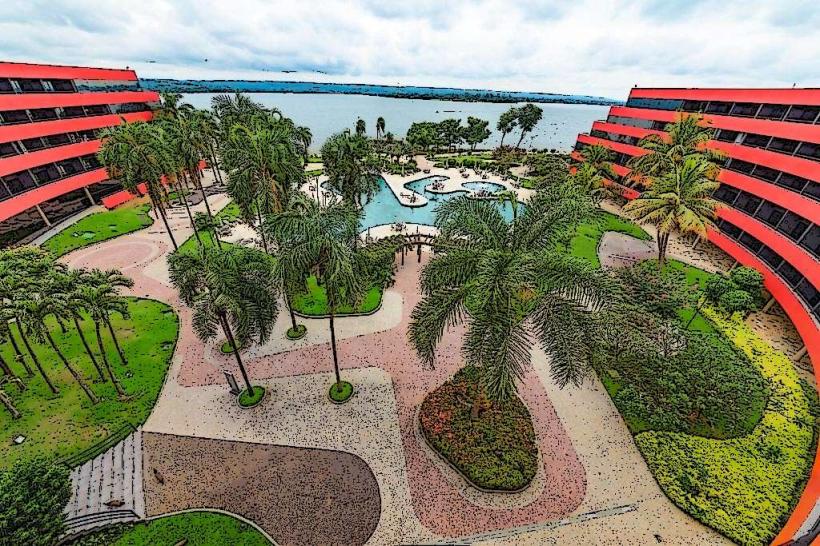Information
City: BrasiliaCountry: Brazil
Continent: South America
Brasilia, Brazil, South America
Overview
Brasília, Brazil’s capital, stands out for its sweeping modernist architecture, carefully mapped streets, and its role as the nation’s political heart.Brasília, unlike most big cities, was purpose-built to be the capital and is still quite young-it opened its wide, sunlit avenues on April 21, 1960.Let’s look past Brasília’s famous landmarks and into its people: unlike Brazil’s sprawling giants, this capital’s metro area holds about 3.1 million residents, enough to pack its wide avenues but still feel smaller than São Paulo or Rio.The city was built to serve as the nation’s government hub, drawing public servants, diplomats, and Brazilians from every corner of the country-people who came to the capital for jobs or school, carrying accents and stories from far-off towns.Brasília may have been carefully planned with neat avenues and sweeping plazas, but over the years it’s expanded in a more haphazard way, creating stark socio-economic gaps between the polished government core and the outlying neighborhoods.People from all over Brazil stream into the city, drawn by its role as the nation’s political heart, where government halls hum with debate.Brasília’s economy runs mainly on government work, yet it’s also seeing steady growth in services, commerce, and technology-from bustling cafés to sleek new software startups.Government and Public Administration: As Brazil’s capital, Brasília draws most of its workers into public service, filling offices in ministries, bustling agencies, and the quiet halls of foreign embassies.The Brazilian government drives much of the local economy, from funding public projects to keeping markets steady.Commerce and Services: The city buzzes with shops and service spots, from bright, bustling malls to small cafés where the smell of fresh coffee drifts out, serving locals and government workers alike.Technology and innovation are on the rise in Brasília, where sleek new offices and buzzing co‑working spaces have sprung up in recent years.In the city, startups-especially in IT and telecom-are springing up, drawn by fast internet, sturdy infrastructure, and their close reach to government offices.Brasília’s transportation network stretches across the city, but every route follows the rhythm of its unique, carefully planned street grid.Public transportation in the city runs on a bus network that stretches across town, linking quiet residential streets to the busy steps of government buildings.You can take the metro, but it’s small and runs mainly through the city’s center and down into the southern neighborhoods.Traffic: Brasília’s streets are broad and neatly laid out, yet the roads still clog during rush hour, when streams of cars pour in from the satellite cities ringing the capital.Presidente Juscelino Kubitschek International Airport (BSB) is Brasília’s main gateway, handling everything from quick hops to Rio to long-haul international flights.The airport ranks among Brazil’s busiest, with suited executives and government officials streaming through its gates every day.Brasília’s highways link it easily to other major Brazilian cities, with long smooth stretches leading toward São Paulo and the coast-bound road to Rio de Janeiro.Sitting in the heart of the country, it serves as a vital transportation hub, with roads and rail lines fanning out to nearby towns.In Brasília, the housing market feels meticulously planned, with clear zones set aside for homes, businesses, and government buildings-sometimes even marked by tree-lined streets that separate them.Plano Piloto is Brasília’s heart, home to its ministries, embassies, and the main government buildings, their white façades gleaming under the sharp midday sun.The area has sleek, modern apartment buildings and just a few residential houses, some with small gardens out front.Downtown’s population is small, especially when you stack it against other cities-it feels quiet enough that you can hear footsteps echo on the sidewalk at night.Because Brasília was carefully planned, most of its people live in surrounding satellite cities, some just a short drive past rows of dusty eucalyptus trees.Cities like Taguatinga, Ceilândia, and Gama have expanded quickly, with neat rows of planned neighborhoods standing beside clusters of improvised homes.In Brasília, the real estate market has been steadily expanding, with sleek glass-front condominiums and bustling new commercial spaces appearing across the city.Still, many people in satellite cities struggle with costs, especially in areas where tidy brick homes sit just a few streets from run-down blocks.Though many picture Brasília mainly for its striking architecture and seat of government, the city hums with a growing arts scene-music spilling from cafés, street murals bursting with the color and spirit of its diverse, inventive residents.Brasília’s architecture is famous worldwide, its sweeping curves and bold lines making the city a true modernist masterpiece.Brazilian architect Oscar Niemeyer and urban planner Lúcio Costa designed it, shaping its curves and clean lines by hand.The city’s landmarks-the Palácio da Alvorada gleaming by the water, the soaring white curves of the Cathedral of Brasília, and the sleek Palácio do Planalto-embody bold, futuristic design and stand as enduring symbols of Brazil’s modernization.The city’s art scene includes several museums and cultural centers, from the grand National Museum of the Republic to the Museum of Brazilian Art, where bright canvases seem to glow under soft gallery lights.These spaces honor Brazil’s rich history and vibrant culture, showcasing everything from centuries-old paintings to bold, modern installations.Music and festivals fill Brasília’s streets, where you can hear the sway of samba, the smooth tones of bossa nova, and the vibrant pulse of MPB drifting from open-air cafés.The city bursts with cultural festivals, from street parades to the Brasília Music Festival, where both local guitarists and touring international bands light up the stage.In Brasília, both public and private schools shape the city’s education, and a few esteemed universities-some with sunlit courtyards-call it home.The University of Brasília (UnB), one of Brazil’s leading schools, shapes the city’s intellectual life-you’ll find its students debating ideas over coffee in sunlit campus courtyards.It offers programs in everything from painting and physics to sociology, engineering, and law, covering a broad spectrum of fields.The city’s home to several private universities and higher education institutions, including the Pontifical Catholic University of Brasília (PUC-Brasília), where red-tiled roofs stand out against the bright blue sky.In Brasília, children can attend solid primary and secondary schools, whether public or private, from leafy neighborhood campuses to busy downtown classrooms.Most people see public education as solid overall, but quality can dip-especially in the satellite cities, where one school might have bright new labs while another struggles with fading chalkboards.Healthcare in Brasília is excellent, especially when you compare it to many other parts of Brazil, where small-town clinics might have just one weary doctor on duty.You can choose between public healthcare and private care-like visiting a local clinic or booking an appointment at a private hospital.Public Healthcare: The city’s Sistema Único de Saúde, or SUS, delivers care to everyone-from a quick check-up at a neighborhood clinic to urgent treatment when it’s needed most.Brasília may be a bustling capital, but the quality of healthcare still varies between its central districts and the outlying satellite towns, where clinics can sit half-empty or lack basic supplies.Private healthcare in Brasília is thriving, with sleek, modern hospitals and private clinics that deliver top-tier care-even the waiting rooms smell faintly of fresh coffee.Private healthcare is easy to get if you can pay for it, like walking into a clinic and booking a same-day appointment.
Landmarks in brasilia

